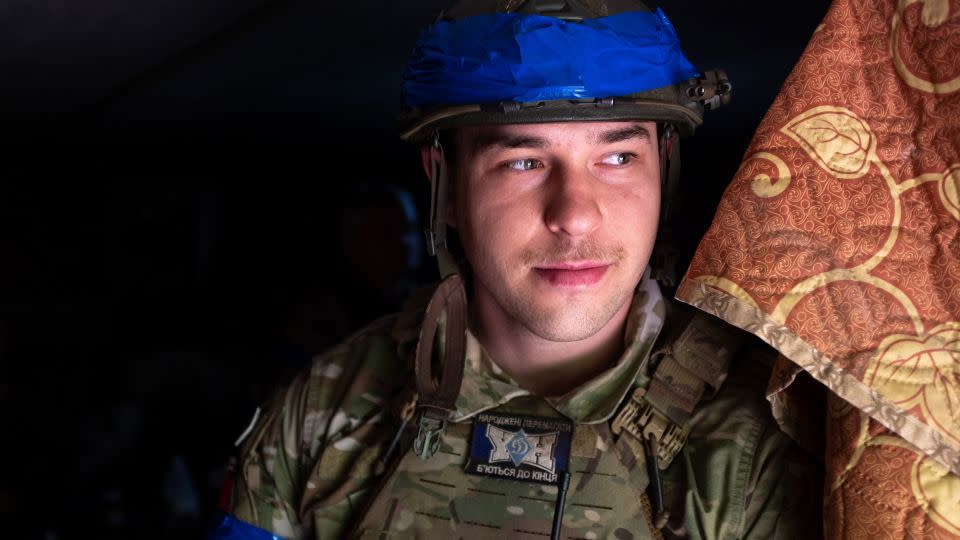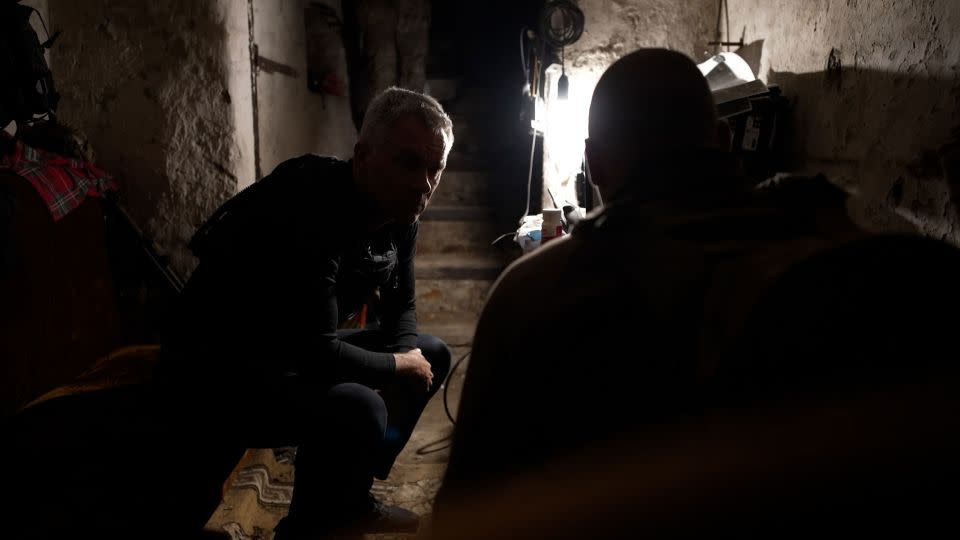‘Everything is burning’: Battles rage outside Kharkiv as Ukraine tries to hold back Russian advance
There are some towns that Ukraine can just never afford to lose, and Lyptsi is one of them.
But the grip the nation keeps is tenuous: The streets are aflame from an airstrike moments earlier when we race in, under the cover of darkness. Night affords them the only respite from drone assault; the hours before we arrive have seen the town hit eight times.
Yet the soldiers of the 13th Khartiia National Guard have to endure, as the stakes here are huge. Russia’s relentless onslaught has a key goal: If they take Lyptsi, then they can position artillery within range of Ukraine’s second city, Kharkiv, 20 minutes down the road.
Down in a bunker, Oleksandr, a commander, looks at one of his many drone feeds. “You saw yourself how everything is burning. It is like that every night.”
His men were among the first to tackle Russia’s new advance into Kharkiv region nearly two weeks ago. He says they are fighting trained professional soldiers.
“We can see it from their equipment and tactics,” he says. “They’re not sending just anyone into the assaults.”
His stare lengthens when asked about what fortifications were in place before the surprise Russian attack. “Nothing was prepared here. Nothing. Just nothing. All the positions are being built by the hands of infantry.”

Outside, the night is shaken by more blasts. “Three weeks ago the civilians were living a peaceful life here. Rebuilding, everything was all right,” he says. “And now most of the houses are ruined.”
As we leave, a loud drone buzzes overhead, close by. Our escort does not flinch or run. I ask if the drone is friendly. “How the f*** should I know?” he replies, tugging on a cigarette.
All around the city of Kharkiv, home to an estimated million civilians, Ukrainian forces are trying to hold back a persistent Russian assault from multiple angles. Over a week reporting in the villages around the city, CNN saw Ukrainian units holding their positions at great peril and risk, and sometimes using aged and scant artillery to fend off a much better equipped Russian force, able to thwart their most basic maneuvers with huge numbers of drones.
At one position closer to the Russian border, the 92nd Assault Brigade showed CNN a Russian artillery gun, captured in the first days of the war, from which they are now firing French mortar shells. The gun was partially hidden by a wire net, aimed at providing some protection from an attack drone. Yet above, an unidentified scout drone began to hover, forcing the unit to run into a bunker.
Another unit is forced to use a Soviet artillery gun made in the 1940s. Hidden in dense foliage, its metal is rusty in parts, limiting how often it can be fired. Artun, their commander, uses newer Polish shells, but now only fires 10 a day, when in the autumn it was 100.
Drones are “a big problem,” Artun says. “I have shrapnel in me as a keepsake,” he adds, referring to the remnants of a Russian Lancet drone still in his hand and stomach, which the surgeons could not remove. “But there are certain actions that can save you from drones.”
One of them springs into life: an alert from a $30 frequency scanner on his webbing. It has picked up the approach of another Orlan drone, sending Artun into the bunker. He looks out into the sky above, and sees it pass overhead. He commands a diverse unit, epitomizing the manpower challenges Ukraine is facing in its third year of war. Some, like him, are wounded infantrymen, put on the guns further back from the front. Others are older, while one of his team is on his first day in artillery.

For nearly two years, Kharkiv thought the threat from its neighbour had passed. A lightning Russian retreat in late 2022 left Kharkiv region peaceful and the launchpad for Ukrainian attacks across the border into Russia proper. Attacks persisted in the distance however, keeping the city’s residents awake through violently loud nights, now amplified by the threat of Russian artillery edging closer. Flares, anti-aircraft fire, and blasts regularly punctuate the enforced blackout, as Russian drones, rockets and airstrikes hit targets in the dark.
On Wednesday, city officials reported an attack on a gas station, which left four people in hospital. On Sunday, two missiles struck a lakeside resort in Cherkaska Lozova, outside the city — a horrifying attack on a civilian target which also used a “double-tap” tactic, in which a second missile hit 10 minutes after the first, injuring first responders.
A few hours after Sunday’s blasts, rescue workers clambered over the ruins of a waterside terrace, retrieving two bodies from the seven who died in the attack. One was a woman, seven months pregnant. Another was only found later, their body fragments in the wreckage. As police combed the eviscerated terrace on the lake for evidence, another air alert sounded, causing half the workers to flee for cover, and some to carry on, almost oblivious.
For more CNN news and newsletters create an account at CNN.com


